#the broken world
Text
I LOVE the comment section on Kill Six Billion Demons. It is truly the chattering of mad gods and Eldritch whispers. I have never found a place that reminds me of home more.
#kill six billion demons#comment section#truth or madness#gods and monsters#demons and angels#the broken world#or a broken mind#every drop of it divine#leeking like a sieve over the spinng wheel chained in place#lets break this machine
22 notes
·
View notes
Text
If you persevere, in time you will have an entirely different problem – not that life is meaningless, but rather that life has almost too much meaning. As the scales fall from your eyes the world rushes into focus, presenting itself with a kind of vibrational eloquence that can, at first, be almost overwhelming. Everything shimmers, everything clarifies, everything wrestles for your attention. Trees feel super-real, their roots plunged into the earth, their branches stretching to the sky, birds are flesh and blood souls, fragile with life, the sky unfolds and rolls, the ocean crashes, people fascinate, books are beautiful, children are whirling dynamos of chaos, dogs bark and cats meow, flowers shout, your neighbour glows, and God runs like a helix through all things. The world awaits you, humming with meaning. You are alive with potential. You are not dead.
— Nick Cave on getting clean, Red Hand Files #258
#w#letters#nick cave#it is a serious thing just to be alive on this fresh morning in this broken world
8K notes
·
View notes
Text

trigun stampede is a good show
#tristamp#trigun#before watching: who’s vashwood#after watching: the world was only ever rusting. all angels are liars or broken fools.#blind faith in humanity is our ruin and our only salvation#trigun is cool ok bye
5K notes
·
View notes
Text

Turtle hunt gone wrong.
[First] Prev <–-> Next
#poorly drawn mdzs#mdzs#wei wuxian#lan wangji#tulu xuanwu#The charming bunny socks betrayed him#the handknit socks have been given a blood sacrifice. The pact is sealed.#I will also add that lwj was sitting down last comic to give his already injured leg a break so now he’s injured twice#I had to double check I did not make up the fact that lwj gets injured in this fight (he does)#the fact his leg has been broken and untreated for days was already enough for the ‘nurse you back to health’ scene#he must be the most stubbon man in the world to have gone this long with only showing minor signs of pain#That or he is just built different. They are putting something in the water in the cloud recesses that is making the teens too strong#Too bad they are also putting something in the water at lotus pier because this teen is about to be gently carried with no issue#I like to think the turtle just gets sad at the implicated rejection and waddles back into the water while the next few scenes happen
968 notes
·
View notes
Text



fluffy fluffy fluffy fluffy
Smooth
#gosh the dp + vanilla slugcat color balance looks WEIRD to me without saint#the broken rainbow...#rain world#flickerdoodles#art#slugcats#group pic
523 notes
·
View notes
Photo

⁜ Il cielo guarda solo chi merita ⁜
--
Kofi | Patreon
#oc#casity#broken dahls#knight#doodles#possessed by immense drawing energy in the middle of the night#Definitely the realm of the kinda art-vibes I wanna do more of--#edgey pseudo-catholic aesthetic tarot card sorta stuff o vo#mixed some of Casity's OG goth/angel vibes into the newer fantasy direction she and her world have taken these days#a good drawing night for me -- would love a repeat#lyric is from mahmood's ghettolimpo#for no reason other than i like how it sounds#cuz in reality i was listening to MCR and ibaraki while actually drawing c:
3K notes
·
View notes
Text
Holding on gets harder and harder everyday and I don’t really see myself having a future.
#holding on#no future#broken#sad#depressed#alone#lost#falling apart#depression#lonely#pain#bpd#depressive#self harming#depressiv#suicidal#crying#borderline personality disorder#suicide#sad world#offing myself#hopeless#bipolar#anxiety#i hate my brain#hate myself#empty inside#empty
2K notes
·
View notes
Text
"i hope you get into a clown car accident involving hammers" <- worse than death and rapes threats according to staff.
because it's directed at them and not marginalized people on their website :)
#rape mention#Or last year when i got an anon with actual nazi shit in it targeting me for being jewish and the report button was broken#That doesn't matter but someone making the most cartoonish unthreatening threat in the world is incredibly scary if#she's a trans woman!! who is reasonably mad that you've mistreated her! someone sue them Now#transmisogyny#transphobia#antisemitism
410 notes
·
View notes
Text

push your face down on my chest
and your heart ain't nothin' but the best
and now a dog's a stray
but i'm gonna stay
aka the bucktommy cowboy au nobody asked for part one (part two) (part three)
(song insp.)
#look i can explain#im a sucker for a cowboy au okay??#will this become a series? ...the world may never know#(probably because im weak for them)#song is im your broken dog by bones of jr jones#bonus lyrics: and i lie down for you / take you home / you can't be withdrew#bucktommy cowboy au#otp: better ways to get your attention#bucktommy#kinkley#tevan#firepilot#fireflight#evan buckley#tommy kinard#911 abc#911 on abc#911 moodboard#em's moodboards#mine#im back on my cowboy bullshit
213 notes
·
View notes
Text
I still have so many thoughts about iterator puppets, A God with a body the size of a country With thousands and thousands eyes watching represented through nothing but a little doll. Imagine how an iterator would feel. You are impossibly large, it would take years for a regular organism to think what you do in a millisecond. Everything is nothing but a speck in comparison to you. Yet the only physical body you're supposed to attach to is a little clump of fabric and metal, smaller than a millionth of your body, it could never show the thoughts you experience and neither does your parents language. However, it is the only physical vessel your creators left you, a god represented by a toy.
Perhaps it's no surprise that even before the global ascension, the iterators hated their creators.
421 notes
·
View notes
Text



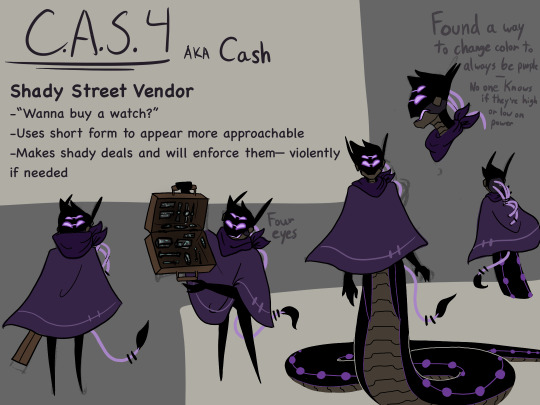
So @somerandomdudelmao made a version of their sona in a dystopia (inspired by @tapakah0 doing the same to theirs) and the person in this ask named the robot C.A.S.5 and I thought, ‘well then there’s at least four other C.A.S. units out and about in the world’ leading to this being the end result! It was a lot of fun to come up with the different customizations each C.A.S. unit has.
also, the design for C.A.S.4 (Cash) was partially inspired by @mobiitez post.
Doodles:

#somerandomdudelmao#tapakah0#my art#Dystopia au#Mob’s character design session#cass fanart tag#i think#I’m probably not going to make more C.A.S. bots but just know C.A.S.7 or Cast is bird based (not sure which bird yet) and blue for my sis#small detail but on Cass there’s broken wires on the back of their head so I decided that they used to connect to the body#Cash hates Castle while Castle is indifferent unless Cash tries to steal from her#Case is vibing with the farm life and making up little tunes#Cazz is a cross between the crazy old cat lady and a backwoods cryptid - they will stare at you from the shadowed depths of the scrap yard#while making commentary to the parts they keep for themselves and of those parts Benji is the favorite#Battery packs for C.A.S. units attach to the things that stick out their backs for the wires - except Cazz who made some internal modificat#No one knows exactly how since the mods are a chaotic hodgepodge of patchwork but they somehow work#Had a lot of fun watching others make stuff for the impromptu dystopia au the vibes of the world were awesome#Technically fanart#so yeah#enjoy!
907 notes
·
View notes
Text


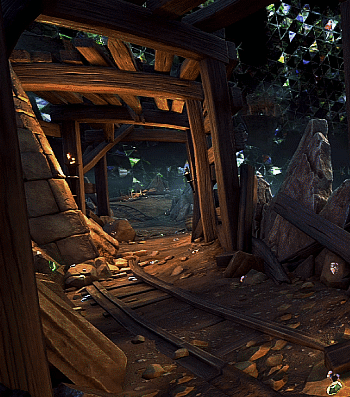

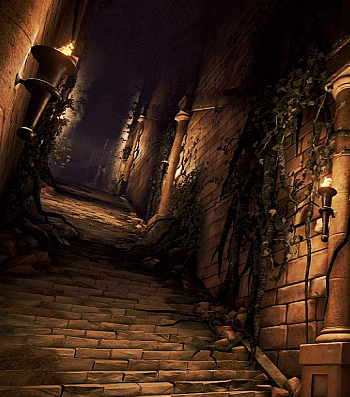

Kingdom Hearts 0.2 Birth by Sleep - A Fragmentary Passage - The World Within
#kingdom hearts 0.2 birth by sleep a fragmentary passage#kh0.2#the world within#dwarf woodlands#realm of darkness#scenery#my gif#this world is interesting because it's so different from the rest#the sky looks like some sort of dome with triangular screens that project a broken glitchy sky#almost as if it takes place in some kind of data simulation#which i don't think is the case but it adds to the feeling of aqua's experiences here not feeling ''real''#i mean this place hardly even resembles what the original world is supposed to look like#like it changed to match aqua's psyche. forcing her to look at her own reflection and confront her own fears; doubts; guilt; and sadness#actually now that i think about it this feels extremely fitting for this world#it's like when snow white was running through the forest and was so afraid that it made the trees around her look alive and dangerous#except aqua has to wander this broken world and face her dark thoughts that take shape by looking exactly like her#she's constantly running in and out of mirrors into rooms that make no logical sense like the endless staircase and the pillar maze#there are ghostly echoes spoken in her own voice that mock her by saying no one can save her and no one wants to. it's chilling#i can't even say for sure if the phantom aquas are actually physically there or if it's all in her head#similar to how she'd see visions of terra and ven#she's such a tragic character
309 notes
·
View notes
Text

I leaned against the beauty of the world / And I held the smell of the seasons in my hands
Anna de Noailles, as quoted in Les Années (The Years) by Annie Ernaux
#w#poetry#anna de noailles#annie ernaux#it is a serious thing just to be alive on this fresh morning in this broken world
2K notes
·
View notes
Text

🇹🇷🇺🇪 🇧🇱🇺🇪
#LEAVE MY SAD WOLF ALONE HE'S TOO PRECIOUS FOR THIS WORLD#art block broken bishes!#whoop#derek hale#derek art#teen wolf#teen wolf art#teen wolf fanart#werewolf#werewolves#tyler hoechlin#art#digital art#fanart#queer artist#tcats arts#teencopandthesourwolf#sterek#eternal sterek#sterek is eternal#cw blood
175 notes
·
View notes
Text
Cold Iron in folklore, fiction, and RPGs
'Gold is for the mistress—silver for the maid!
Copper for the craftsman cunning at his trade.'
'Good!' said the Baron, sitting in his hall,
'But Iron—Cold Iron—is master of them all!'
— Rudyard Kipling, “Cold Iron”
Folklore

Drudenmesser, or "witch-knife", an apotropaic folding knife from Germany
The notion that iron (or steel) can ward against evil spirits, witches, fairies, etc is very widespread in folklore. You hang a horseshoe over your threshold to deny entry to evil spirits, you carry an iron tool with you to make sure devils won't assault you, you place a small knife under the baby's crib to ward it from witches, and so on. Iron is apotropaic in many many cultures.
In English, we often come across passages that refer to apotropaic cold iron (or cold steel). "All uncouth, unknown Wights are terrifyed by nothing earthly so much as by cold Iron", says Robert Kirk in 1691, which I believe is the earliest example. "Evil spirits cannot bear the touch of cold steel. Iron, or preferably steel, in any form is a protection", says John Gregorson Campbell in 1901.
Words
So what is cold iron? In this context, it’s just iron. The “cold” part is poetic, especially – but not only – if we’re talking about either blades (or swords, weapons, the force of arms) or manacles and the like. It just sounds more ominous. There are “cold yron chaines” in The Fairie Queene (1596), and a 1638 book of travels tells us that a Georgian general (in the Caucasus) vowed “to make the Turk to eat cold iron”.
Green’s Dictionary of Slang defines “cold iron” as a sword, and dates the term to 1698. From 1725 it appears in Cant dictionaries (could this sense be thieves’ cant, originally? why not, plenty of words and expressions started as underworld slang and then entered the mainstream), and from ~1750 its use becomes much more common.

NGram Viewer diagram for 1600-2019.
In other contexts, cold iron is (surprise!) iron that’s not hot. So let’s talk a bit about metallurgy.
Metals

In nature, we can find only one kind of iron that’s pure enough to work with: meteoritic iron. It has to literally fall from the sky. Barring that very rare occurrence, people have to mine the earth for iron ore, which is not workable as is. To separate the iron from the ore we have to smelt it, and for that we need heat, in the form of hot charcoals. Throwing the ore on the coals won’t do much of anything, it’s not hot enough. But if we enclose the coals in a little tower built of clay, leaving holes for air flow, the temperature rises enough to smelt the ore. That’s called a bloomery.

clay bloomery / medieval bloomery / beating the bloom to get rid of the slag
What comes out of the bloomery is a bloom: a porous, malleable mass of iron (that we need) and slag (byproducts that we don’t need). But now we can get rid of the slag and turn the porous mass to something solid, by hammering the hot bloom over and over. And once the slag is off, by the same process we can give it a desired shape in the forge, reheating it as needed. This is called “working” the iron, hence “wrought iron” objects, i.e. forged.

a blacksmith in his forge, with bellows, fire, and anvil (English woodcut, 1603)
This is the lowest-tech version, possibly going back to ~2000 BCE in Nigeria. If we add bellows, the improved air flow will raise the temperature. So smelting happens faster and more efficiently in the bloomery, and so does heating the iron in the forge, making it easier to work with. And that’s the standard process from the Iron Age all through the middle ages and beyond (although in China they may have skipped this stage and gone straight to the next one).
If we make the bloomery bigger and bigger, with stronger and stronger bellows, we end up with a blast furnace, a construction so efficient that the temperature outright melts the iron, and it’s liquified enough to be poured into a mould and acquire the desired shape when it cools off. This is “cast iron”.
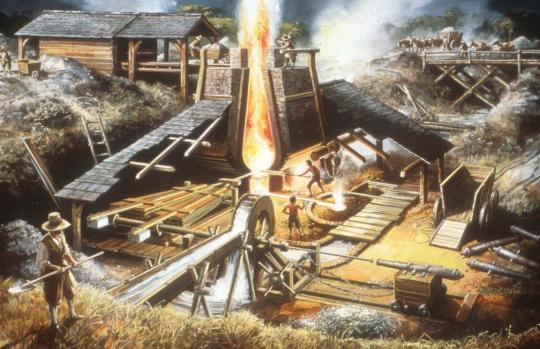
a blast furnace
So in all of this, what’s cold iron? Well, it’s iron that went though the heat and cooled off. (No heat = no iron, all you got is ore.) If it came out of a bloomery, or if it wasn’t cast, it’s by definition worked, hammered, beaten, wrought, and that happened while it was still hot.
Is there such a thing as “cold-wrought” iron? No. In fact, “working cold iron” was a simile for something foolish or pointless. A smith who beats cold iron instead of putting it in the fire shows folly, says a 1694 book on religion, so you too should choose your best tools, piety and good decorum, to educate your children and servants, instead of beating them. When Don Quixote (1605) declares he’ll go knight-erranting again, Sancho Panza tries to dissuade him, but it’s like “preaching in the desert and hammering on cold iron” (a direct translation of martillar en hierro frío).
Minor work can be done on cold iron. A 1710 dictionary of technical terms tells us that a rivetting-hammer is “chiefly used for rivetting or setting straight cold iron, or for crooking of small work; but ’tis seldom used at the forge”. Fully fashioning an object out of cold iron is not a real process – though a 1659 History of the World would claim that in Arabia it’s so hot that “smiths work nails and horseshoes out of cold iron, softened only by the vigorous heat of the sun, and the hard hammering of hands on the anvil”. [I declare myself unqualified to judge the veracity of this statement, let's just say I have doubts.] And there is of course such a thing as “cold wrought-iron”, as in wrought iron after it’s cooled off.
Either way, in the context of pre-20th century English texts which refer to apotropaic “cold iron”, it’s definitely not “cold-wrought”, or meteoritic, or a special alloy of any kind. It’s just iron.
Fiction
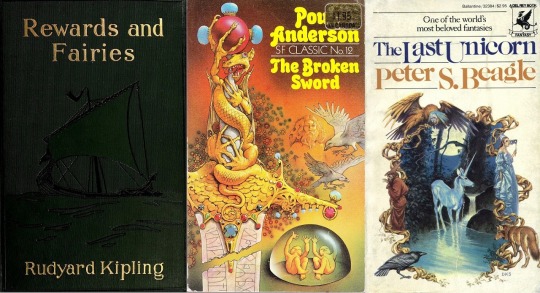
The old superstition kept coming up in fantasy fiction. In 1910 Rudyard Kipling wrote the very influential short story “Cold Iron” (in the collection Rewards and Fairies), where he explains invents the details of the fairies’ aversion to iron. They can’t bewitch a child wearing boots, because the boots have nails in the soles. They can’t pass under a doorway guarded by a horseshoe, but they can slip through the backdoor that people neglected to guard. Mortals live “on the near side of Cold Iron”, because there’s iron in every house, while fairies live “on the far side of Cold Iron”, and want nothing to do with it. And changelings brought up by fairies will go back to the world of mortals as soon they touch cold iron for the first time.
In Poul Anderson’s The Broken Sword (1954), we read:
“Let me tell you, boy, that you humans, weak and short-lived and unwitting, are nonetheless more strong than elves and trolls, aye, than giants and gods. And that you can touch cold iron is only one reason.”
In Peter S. Beagle’s The Last Unicorn (1968) the unicorn is imprisoned in an iron cage:
“She turned and turned in her prison, her body shrinking from the touch of the iron bars all around her. No creature of man’s night loves cold iron, and while the unicorn could endure its presence, the murderous smell of it seemed to turn her bones to sand and her blood to rain.”
Poul Anderson would come back to that idea in Operation Chaos (1971), where the worldbuilding’s premise is that magic and magical creatures have been reintroduced into the modern world, because a scientist “discovered he could degauss the effects of cold iron and release the goetic forces”. And that until then, they had been steadily declining, ever since the Iron Age came along.
There are a million examples, I’m just focusing on those that would have had a more direct influence on roleplaying games. However, I should note that all these say “cold iron” but mean “iron”. Yes, the fey call it cold, but they are a poetic bunch. You can’t expect Robin Goodfellow’s words to be pedestrian, now can you?
RPGs

And from there, fantasy roleplaying systems got the idea that Cold Iron is a special material that fey are vulnerable to. The term had been floating around since the early D&D days, but inconsistently, scattered in random sourcebooks, and not necessarily meaning anything else than iron. In 1st Edition’s Monster Manual (1977) it’s ghasts and quasits who are vulnerable to it, not any fey creature. Devils and/or fiends might dislike iron, powdered cold iron is a component in Magic Circle Against Evil, and “cold-wrought iron” makes a couple of appearances. For example, in AD&D it can strike Fool’s Gold and turn it back to its natural state, revealing the illusion.
Then Changeling: The Dreaming came along and made it a big deal, a fundamental rule, and an anathema to all fae:
Cold iron is the ultimate sign of Banality to changelings. ... Its presence makes changelings ill at ease, and cold iron weapons cause horrible, smoking wounds that rob changelings of Glamour and threaten their very existence.... The best way to think about cold iron is not as a thing, but as a process, a very low-tech process. It must be produced from iron ore over a charcoal fire. The resulting lump of black-gray material can then be forged (hammered) into useful shapes.
— Changeling: The Dreaming (2nd Edition, 1997)
So now that we know how iron works, does that description make sense? Well, if we assume that the iron ore is unceremoniously dumped on coals, it does not. You can’t smelt iron like that. If we assume that a bloomery is involved even though it’s not mentioned, then yes, this is broadly speaking how iron’s been made since the Iron Age, and until blast furnaces came into the picture. But the World of Darkness isn’t a pseudo-medieval setting, it’s modern urban fantasy. So the implication here is that “cold iron” is iron made the old way: you can’t buy it in the store, someone has to replicate ye olde process and do the whole thing by hand. Now, this is NOT how the term “cold iron” has been used in real life or fiction thus far, but hey, fantasy games are allowed to invent things.
Regardless, 3.5 borrowed the idea, and for the first time D&D made this a core rule. Now most fey creatures had damage reduction and took less damage from weapons and natural attacks, unless the weapon was made of Cold Iron:
“This iron, mined deep underground, known for its effectiveness against fey creatures, is forged at a lower temperature to preserve its delicate properties.”
— Player’s Handbook (3.5 Edition, 2003)
Pathfinder kept the rule, though 5e did not. And unlike Changeling, this definition left it somewhat ambiguous if we’re talking about a material with special composition (i.e. not iron) or made with a special process (i.e. iron but). The community was divided, threads were locked over this!
So until someone points me to new evidence, I’ll assume that the invention of cold iron as a special material, distinct from plain iron, should be attributed to TTRPGs.
#long post#cold iron#d&d#Changeling: The Dreaming#World of Darkness#Peter S. Beagle#The Last Unicorn#Rudyard Kipling#Poul Anderson#The Broken Sword#how to rogue#pathfinder#rogues in fiction#Operation Chaos#rogue superstitions#words of the trade#thieves' cant#ad&d#d&d history#1st edition#fey#3.5#fluff#trs
338 notes
·
View notes
Text


Happy bday to Elden Ring!!!
My headcanon for Goldmask and Corhyn! My thoughts in the tags for those who don't want spoilers. :3) Process video on TikTok.
#digital#human artist#elden ring#im posting again yay!!#im also on TikTok now so if any of y'all like that app im gawkiart on there!#anyways#headcanon!#i like to think corhyn#obviously#had no idea what he was getting into because he was SO FUCKING STOKED FOR THIS ADVENTURE#AND HE WAS ALSO SUPER INVESTED AND IN AWE OF GOLDMASK#but in the end#both of their worlds crumbled#literally and mentally#corhyn basically got his heart broken when he learned GOLDMASK isn't perfect!??#really high expectations what can u do#and goldmask tried for the longest time to hold his composure but in the end really wore him out#uhg#well I mean he wore himself out#possibly to death and I feel like Corhyn died of a broken heart before his actual demise#it was my first ending because I just loved their dynamic so much
1K notes
·
View notes